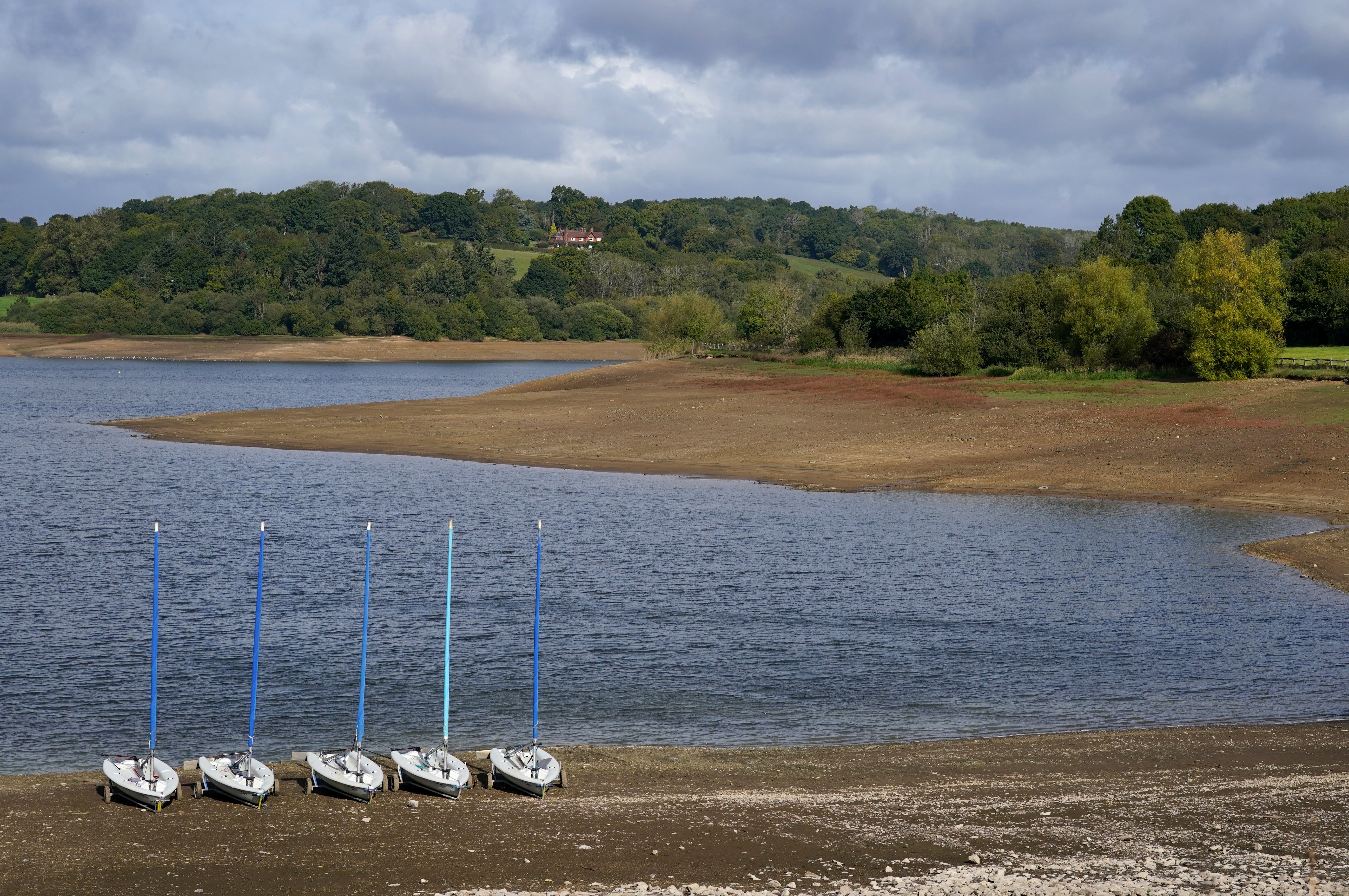‘Significant action’ needed as most of England still in drought
Reservoir stocks were at 52% of total capacity as of September 20, the Environment Agency said.

Your support helps us to tell the story
From reproductive rights to climate change to Big Tech, The Independent is on the ground when the story is developing. Whether it's investigating the financials of Elon Musk's pro-Trump PAC or producing our latest documentary, 'The A Word', which shines a light on the American women fighting for reproductive rights, we know how important it is to parse out the facts from the messaging.
At such a critical moment in US history, we need reporters on the ground. Your donation allows us to keep sending journalists to speak to both sides of the story.
The Independent is trusted by Americans across the entire political spectrum. And unlike many other quality news outlets, we choose not to lock Americans out of our reporting and analysis with paywalls. We believe quality journalism should be available to everyone, paid for by those who can afford it.
Your support makes all the difference.Significant action is needed to manage water levels as most of England remains in drought and could do so into next year, the Environment Agency has said.
Areas classed as being in “prolonged dry weather” include Greater Manchester, Merseyside and Cheshire, and the North East.
Last week, Cumbria and Lancashire moved to that status, as very dry soil means rainfall is taking longer to replenish groundwater and reservoir water levels.
As of September 20, total reservoir stocks were at 52% of total capacity, the Environment Agency said.
It added that, without average rainfall over autumn and winter, the drought is expected to last into 2023.
The agency said it expects water companies to continue to take “all the necessary actions to mitigate the impact of the drought by implementing their drought plans” including applying for drought permits and drought orders where required to increase their water supplies.
South West Water, Yorkshire Water, South East Water and Thames Water have all recently submitted drought permits to the agency.
The Environment Agency said it had also applied to the Department for Environment Food and Rural Affairs (Defra) for two drought orders to protect the water environment of the Black Moss and Elslack reservoirs.
For this year and indeed the coming decade, significant action must be taken if we are to mitigate the impacts of climate change on our water security
The National Drought Group (NDG) met on Wednesday and agreed to take a “proactive approach to implementing drought plan interventions” and other schemes this winter; review autumn/winter projections and continue “scenario-planning” into next year; keep working collaboratively across sectors to manage the impact on water supplies, the environment and agriculture.
David Dangerfield, group chairman and the agency’s director of water, land and biodiversity, said that despite September rainfall issues around water supply remain.
He said: “When rain falls, it is easy to assume the need to act against drought and prolonged dry weather has passed, but that is not the case.
“Water pressures on agriculture, wildlife and the environment remain high as we head into the autumn and winter, which is why we must continue to manage water wisely.
“For this year and indeed the coming decade, significant action must be taken if we are to mitigate the impacts of climate change on our water security.”
Water security minister Trudy Harrison, said: “While essential water supplies are safe, more work must be done to ensure that we accelerate the investment needed to cut leaks, increase water efficiency and water supply and better prepare for prolonged dry weather events over the coming decade.
“Water companies must put the needs of their bill payers at the heart of their plans, which means redoubling efforts to cut leakage, accelerate delivery of projects increasing water resilience and protect our natural environment.”
The NDG will meet again on October 14 when the water supply sub-group is expected to give a progress update on their planning to manage any water shortfalls into 2023.